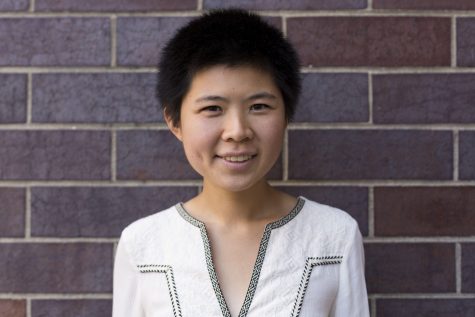The Social Issues of Our NYU
May 2, 2016
Hashtags inundate social media, and whether it is #ISIS or #PrayForParis, NYU students actively pursue these conversations outside from their classrooms into the city. While students in the past protested issues including the Vietnam War and the civil rights movement, students of today have channeled their focus on issues unique to their time utilizing social media as a tool. Here are the top five issues that NYU students engaged in during the 2015-2016 school year.
Black Lives Matter
Although #BlackLivesMatter started in 2013 due to the Trayvon Martin shooting, the movement arguably expanded this school year after students at University of Missouri used social media to anonymously threaten the lives of students of color. Hashtags like #InSolidarityWithMizzou and #ConcernedStudent1950 were created to demonstrate support, and Black Students Union at NYU started a Facebook event called Blackout NYU, which was attended by almost 2000 students. The widespread activism and allyship even led to an NYU Diversity forum for students to express their discomforts with the university’s diversity efforts.
Ban the Box
The Incarceration to Education Coalition pushed NYU to remove “the box” on applications, under allegations that it propagates racism. The box is often used as a screening process for making acceptance decisions; formerly incarcerated individuals check it when applying for school, housing and work. This year, the club’s biggest effort to eradicate the question was a 33-hour sit in on the Kimmel Grand Staircases, which helped IEC club representatives secure meetings with the Common App and with President Hamilton.
Divest
NYU was no stranger to sleeping bags during protests this year. NYU Divest also slept over when members occupied the Bobst administrative elevator on the far right corner of the library. Many activists stayed overnight but disbanded after administration threatened disciplinary action regarding trespassing charges towards students who continued occupying the elevator past the library’s 1 a.m. closing time. The students urged NYU to #keepitintheground and succeeded in meeting with President Hamilton to discuss divestment reasons. Before the meeting, a group of seven Gallatin professors delivered a letter of support for divestment when they accompanied the Divest representatives to their meeting with President Hamilton.
Fight for Fifteen
This national issue sparked conversations not only in politics but also on campuses across the United States, and NYU joined the movement with rallies, petitions and discussions. Although the Student Labor Action Movement formed and advocated for years, the #fightfor15 did not see many results in this fight until March 24. President Hamilton issued a note that detailed his plan to raise the student worker minimum wage to $15. This would happen in $1.50 increments every school year: $12 for 2016-2017, $13.50 for 2017-2018 and $15 for 2018-2019.
Tampon Tax
The “pink tax” is the additional charging of female products. However, medical necessities cannot receive taxation under the law. This is ignored with the taxation of pads and tampons, which give them a stigma of being luxury items. Therefore, some New York City public schools started providing its students free tampons and pads to remedy the unfair pricing, and students initiated the conversation at NYU this year with the nationwide #tampontax. On March 10, Women’s HERstory Month at NYU even hosted an event where forefront activists of this cause such as writer Jennifer Weiss-Wolf, NYC Councilwoman Julissa Ferreras-Copeland and musician Kiran Gandhi spoke about the politics and history behind this topic.
A version of this article appeared in the May 2 print edition. Email Diamond Naga Siu at [email protected].























































































































































